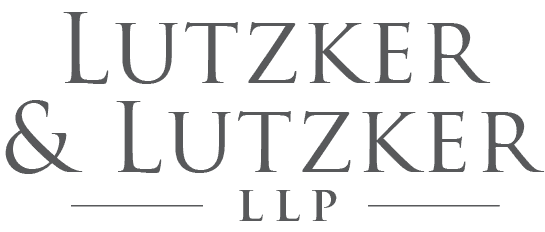USPTO Home Address Rule
A 2019 United States Patent and Trademark Office (“USPTO”) rule making domicile address reporting on trademark applications more stringent spurred concern regarding the policy’s privacy implications. However, on October 7, 2024, the U.S. Supreme Court denied a petition for certiorari in Chestek PLLC v. Vidal, 2024 U.S. Lexis 3347 (2024), leaving in place the domicile address requirement. Fortunately, there are currently two less publicized options trademark applicants can use to mitigate the potential harm of public access to their home addresses.
Background
The Lanham Act, which empowers the USPTO to regulate trademarks, requires the agency to collect domicile information from trademark applicants. Historically, the USPTO accepted post office addresses as valid domicile addresses. However, in 2019, in response to an increase in fraudulent trademark applications by foreign parties, the USPTO began requiring that all foreign trademark applicants hire a U.S. licensed attorney to handle their filings and that all individual trademark applicants, whether foreign or domestic, provide their domicile address, which is the place the person resides and intends to be their principal home, or in the case of businesses, the principal place of business of a juristic entity. 37 CFR 2.2 (the “Rule”).
USPTO Actions
The final version of the Rule indicated that the USPTO was issuing it as an agency procedural rule not subject to any notice-and-comment requirements. The USPTO did, however, seek public comment voluntarily, but the notice of proposed rulemaking did not include the domicile address requirement. Rather, the USPTO addressed the requirement that foreign trademark applicants hire U.S. licensed counsel and included limited language about applicants providing information to indicate whether they are based in the U.S. Advocacy groups concerned with privacy and domestic violence issues, including the Humane Society of the United States, the National Immigrant Justice Center, the Tahirih Justice Center and the Legal Aid Society, submitted comments against the new domicile address requirement, citing the implications for the privacy and physical safety of applicants.
Legal Challenge
Chestek filed an application to register the mark “CHESTEK LEGAL.” In its trademark application (deliberately testing the Rule), Chestek declined to provide a street address, using only a post office box address. The USPTO rejected the application, citing the Rule. The Trademark Trial and Appeal Board (“TTAB”) upheld the agency’s decision in In re Chestek PLLC, 2022 TTAB LEXIS 100 (Trademark Trial & App. Bd., Mar. 30, 2022), and Chestek appealed the case to the Federal Circuit Court of Appeals, arguing that the USPTO did not follow the proper rulemaking procedure when it changed the domicile address requirements. Chestek argued that because the Rule substantively affects the rights of trademark applicants, the USPTO’s failure to conduct the notice-and-comment rulemaking process rendered it invalid. Reviewing the USPTO’s rulemaking procedure de novo under the arbitrary and capricious standard, the Federal Circuit Court of Appeals affirmed the TTAB’s decision, holding that the domicile address rule is valid because it is not substantive. The Rule “requiring different or additional information from applicants regarding their addresses … does not alter the substantive standards by which the USPTO evaluates trademark applications, e.g., a mark’s use in commerce or distinctiveness.” The Court also found that the home address rule was not arbitrary and capricious because the USPTO’s justification for requiring the information was “reasonably discernable.” Just because the Rule does not take all privacy concerns into account “such as its impact on victims of domestic violence or on homeless individuals,” the agency is under no obligation to exhaust all policy concerns. In re Chestek PLLC, 92 F.4th 1105 (Fed. Cir. 2024). Chestek appealed to the Supreme Court, which denied cert. in October 2024.
Applicant Self Help Measures to Address Privacy and Safety Concerns
The Rule has continued to raise serious questions of privacy and physical safety because information included in trademark applications is publicly available. Critics have warned that the Rule puts trademark applicants in danger of stalking and specifically threatens the safety of victims of domestic abuse.
Although the USPTO has not addressed concerns about applicant safety directly, there are ways to conceal domicile information on trademark applications. A trademark owner’s domicile address will not be made visible on public filings if the owner also provides a mailing address, which will be publicly available. From 2020 to 2023, there was a significant data leak of private addresses. In response, the USPTO masked the private addresses, corrected the system vulnerabilities and sent notices to all 61,0000 applicants (about 3% of the total number filed during the three-year period) impacted by the leak.
Another more limited option for applicants is to file a petition with the director of the USPTO to redact the domicile address on their application or waive the domicile address requirement due to “an extraordinary situation.” This includes having concerns over physical safety at any time during the trademark process. However, because this option is limited to “extraordinary situations,” individual applicants should still provide separate mailing and domicile addresses so that only the mailing address is made public.
L&L will continue to follow these important issues of privacy and are available to guide you through the USPTO filing process.
Notes
The decision in the Chestek appeal relied on the principles of deference to agency decisions unless they are clearly arbitrary and capricious as set forth in Motor Vehicles Manufacturers v. State Farm, 463 U.S. 29 (1983). It did not involve the long-standing doctrine known as Chevron deference (courts defer to agency interpretations if a statute is ambiguous), overruled by the Supreme Court in Loper Bright Enters. v. Raimondo, 603 U.S. 369 (2024).





